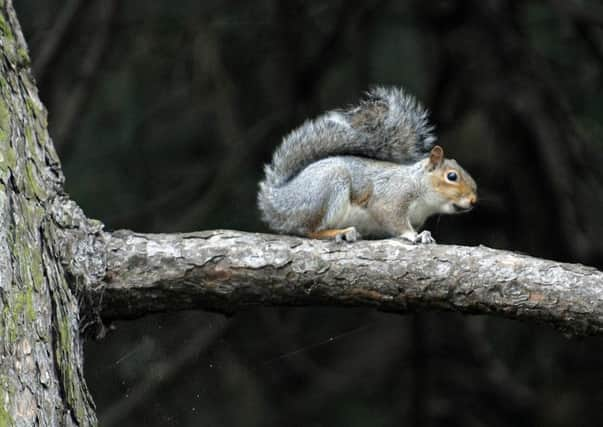Grey squirrel cull needed to stop virus - report


Research carried out for Scottish Natural Heritage (SNH) predicts how squirrelpox could spread in grey squirrel populations north of the border and wipe out the native red.
The UK’s only indigenous squirrel species has been declining at an alarming rate since the introduction of its larger relative from the US in the 19th century.
Advertisement
Hide AdAdvertisement
Hide AdThe aliens out-compete the natives for food and pass on disease, resulting in greys replacing reds within 15 years of arrival in many places.
Recent estimates suggest numbers have fallen to around 120,000 in Scotland, which now hosts 75 per cent of the surviving UK population.
Squirrelpox has been blamed as a major factor in the decline of populations in England and Wales.
The report, by Professor Andy White from Heriot-Watt University and ecological consultant Dr Peter Lurz, assesses the likely future spread of the virus to help guide future conservation efforts.
Prof White said: “Our work showed that it will be challenging to contain the squirrelpox virus in southern Scotland, where there is abundant woodland suited to grey squirrels.
“Without grey squirrel control, the virus will likely continue to spread across all areas where grey squirrels exist.
“Importantly, however, our research found that the virus is unlikely to spread through areas that only have red squirrel populations, which is great news for the red squirrels of the Highlands, parts of Tayside, Argyll, Moray and Aberdeenshire.
“The key will be to remain vigilant for grey squirrels trying to colonise these areas.”
Advertisement
Hide AdAdvertisement
Hide AdThe American species can carry the virus without showing signs of illness, while red squirrels experience severe symptoms and high death rates.
The first reports of squirrelpox in Scotland were in 2005 along the border with Cumbria.
Since then conservationists, forest rangers, landowners and gamekeepers have been making significant efforts to contain the virus.
However, despite reds squirrels continuing to thrive in some isolated areas, the disease has continued to spread.
Ron Macdonald, director of policy and advice at SNH, said: “This report provides us with valuable information on how best to protect important populations of red squirrels in the face of the increasing spread of squirrelpox.”
Meanwhile the conservation group Saving Scotland’s Red Squirrels is stepping up its squirrelpox surveillance programme and is calling for the public to be vigilant for signs of the disease.
A culling programme is already taking place in certain areas of Scotland, including Aberdeenshire and Fife, in an effort to halt the spread of invading greys.
More than 10,000 are already believed to have been killed.
The red squirrel, nicknamed the tufted acrobat for its agility in climbing trees, came second to the golden eagle in a recent campaign to find Scotland’s favourite animal.
Advertisement
Hide AdAdvertisement
Hide AdThe is another hope on the horizon to save red squirrels from the deadly pox.
Scientists at the Moredun Research Institute have already built up a detailed understanding of how the virus functions and are now focused on developing a vaccine to protect the species.
SEE ALSO